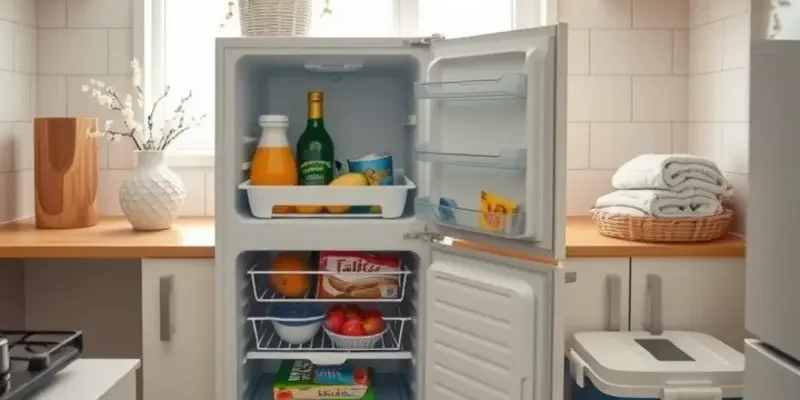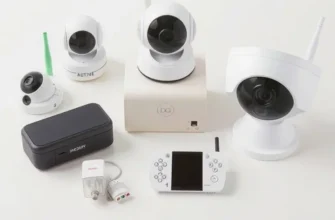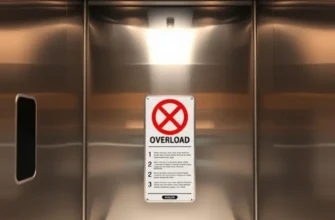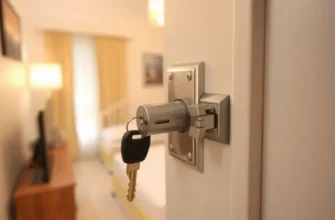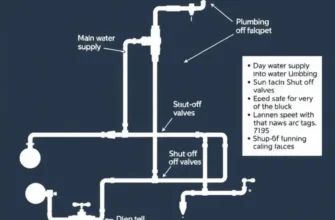If you’re a renter, managing your space efficiently is paramount—especially when it comes to appliances like your freezer. A well-maintained freezer not only keeps your food fresh but also helps avoid messy ice build-up that can cause damage or inefficiency. Defrosting your apartment freezer may seem like a daunting task, but it doesn’t have to be. With the right approach, this chore can be done safely, securely, and without hassle. This guide will walk you through essential tips and steps to ensure a smooth defrosting process while prioritizing your safety, protecting your belongings, and making your living environment comfortable. Understanding how to keep your freezer in good order means less worry for you, a crucial element when living in an apartment. Let’s explore the best practices for making this task less cumbersome and more manageable.
Preparing for Defrosting: The Right Steps
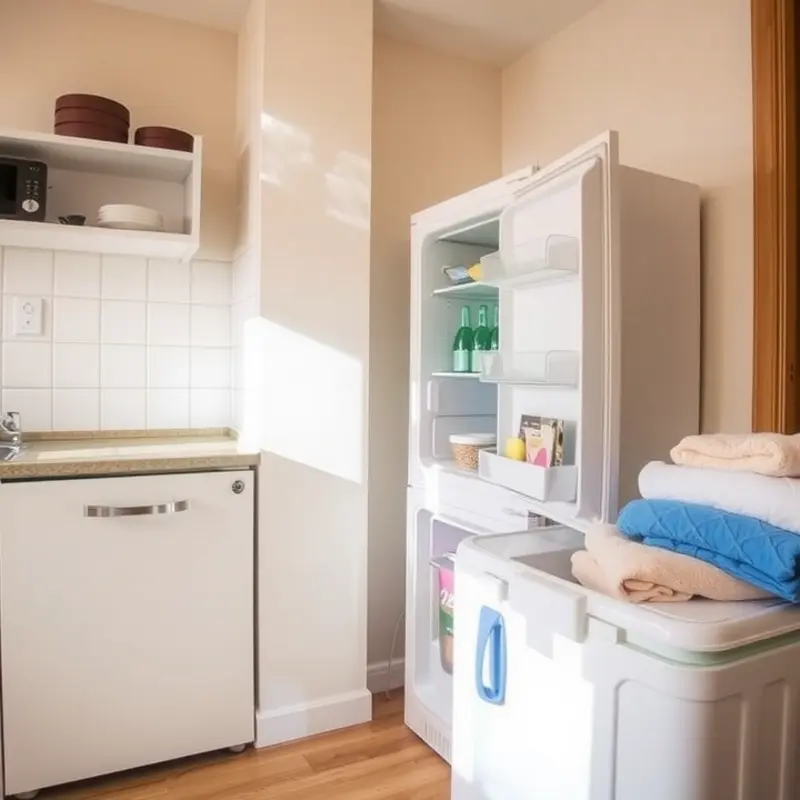
Defrosting your freezer requires careful planning to ensure safety and effectiveness. The process begins with gathering the tools and materials you’ll need. Towels or a mop are crucial to absorb the melting ice water, which will help prevent floor damage and ensure safety. A cooler is also advisable to keep your food items temporarily, maintaining their freshness during the defrosting process.
Unplugging the freezer is one of the first steps. It allows the melting phase to commence in a controlled manner. By doing this in advance, you give yourself a head start in thawing the accumulated ice naturally, reducing the time needed later for manual defrosting.
Clear the area around your freezer. This ensures you have ample space to work and manage any water overflow. Move any items that might obstruct your access to the freezer or could be damaged by water. In apartments, where space is often limited, this preparation step is crucial.
Ensure safety by checking the electrical cords and outlets for any sign of wear or damage before unplugging. This could prevent any potential electrical hazards that might arise during the process. In a rental setting, avoiding water damage should be a top priority since it could lead to costly repairs or disputes with your landlord.
Additionally, consider wearing rubber gloves. They provide protection if you need to handle any ice directly, keeping your hands warm and dry. It prevents accidental contact with sharp pieces of ice that could cause injury.
If your apartment is prone to leaking or has older appliances, you might want to learn more about detecting potential problems early on. See our guide on apartment leak detection tools to explore additional precautions.
Finally, ensure you have a basin or tray ready to collect larger pieces of ice as they detach. This way, you can manage the thawing process efficiently, directing water away from areas it shouldn’t reach.
By following these steps, you’re not only preparing your space for a defrosting session but also safeguarding against potential mishaps. It reinforces the importance of thorough preparation, ensuring the process is both smooth and safe, especially within an apartment setting where care for communal and personal property is essential.
Executing the Defrost: Smart Techniques
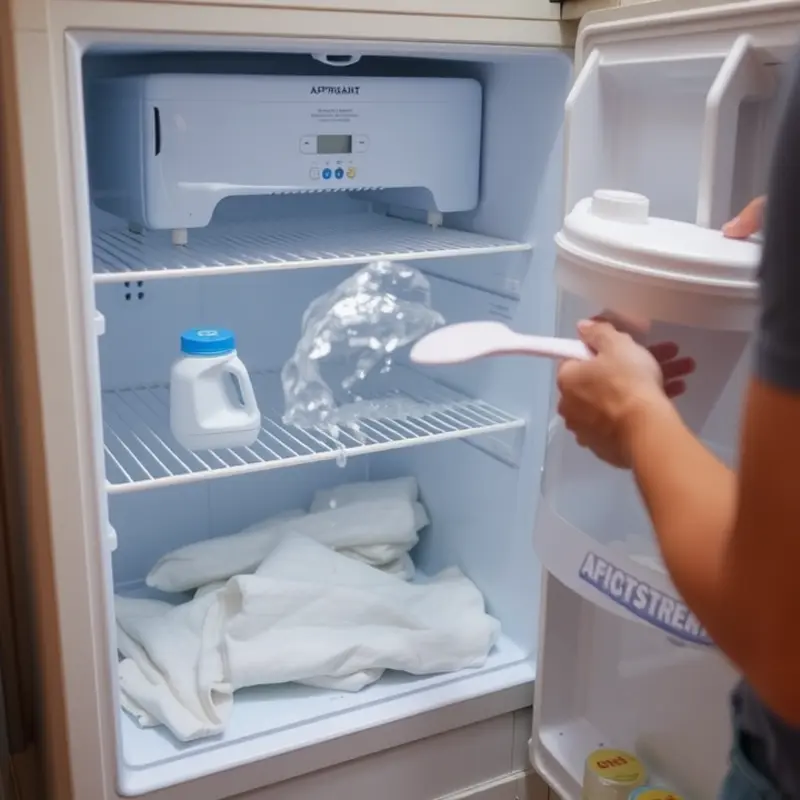
Once your space is prepared, the actual defrosting process can begin. Start by unplugging the freezer to allow the ice to melt naturally. This is the safest method and minimizes risks of damage to your appliance. While it may be tempting to speed up this process, patience is your best tool.
To help things along, use a plastic spatula for gently prying off loose ice as it softens. Be careful to avoid sharp tools, as these can harm the freezer’s interior and lead to costly repairs. Another effective tool is a microwaveable bowl filled with hot (not boiling) water. Placing it inside the freezer can produce steam, which helps melt the ice faster.
Keep a close watch on melting water to prevent damage and ensure safety. Frequently mop up excess water to avoid slips and further messes. Consider placing towels both inside and outside the freezer to catch dripping water. This smart precaution keeps your apartment floor dry and the maintenance process efficient.
If your freezer has a drainage system, check for any ice blockages. Ice can easily accumulate in the drainage channel, impeding effective water flow. Use warm water—not boiling—to gently clear these blockages. Pouring hot water over the obstruction can help melt the ice without risking damage to the system.
Throughout the defrosting task, maintaining safety and cleanliness should be your top priorities. Remember that rental agreements often require the tenant to manage damage control strictly. Keeping your apartment secure and well-maintained not only avoids potential issues with your landlord but also enhances your living space.
As you navigate this process, it’s worthwhile to consider adopting other maintenance habits, like apartment sink clog prevention, which can contribute to a smoothly running home environment.
Incorporating these smart defrosting techniques ensures a safe, efficient experience that aligns with responsible rental maintenance. By being methodical and attentive, you can maintain a pristine freezer and keep your apartment in tip-top shape.
Final words
Defrosting your apartment freezer can be a straightforward and manageable chore when approached correctly. By preparing adequately and employing smart techniques during the process, you ensure not only the functionality of your appliance but also the safety and cleanliness of your living space. Remember, maintenance is key when renting—keeping your appliances in good condition can prevent larger issues down the line. With these steps, you’ll be able to enjoy a hassle-free defrosting experience, giving you peace of mind in your home. Put these tips into practice the next time your freezer needs attention, and make it an effortless task that adds to your overall comfort.

